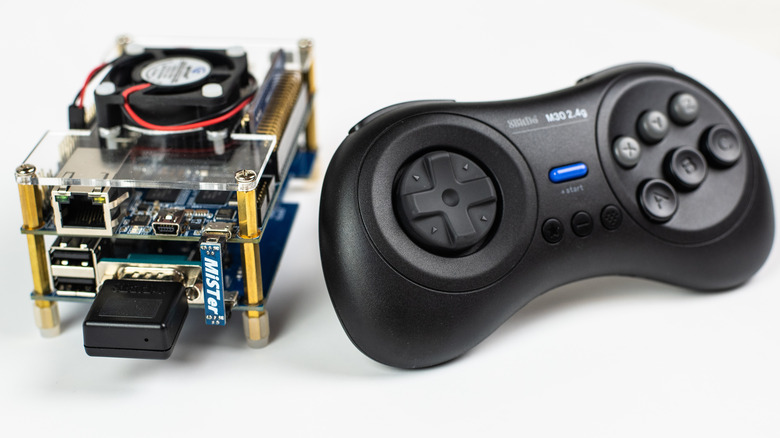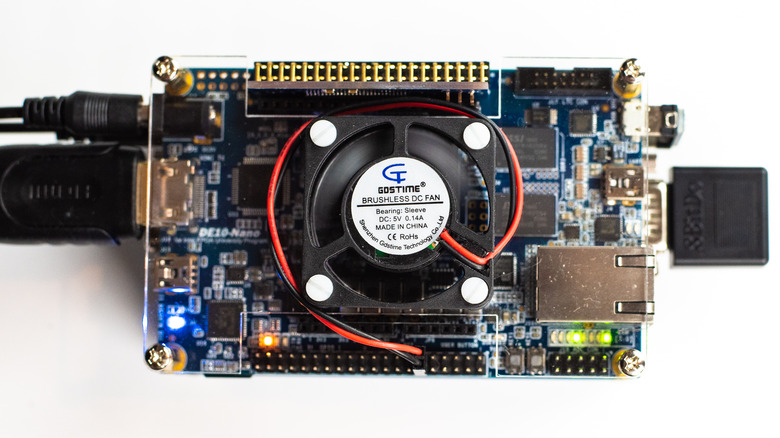Why The MiSTer Is The Best FPGA Gaming Device You Can Buy
Retro gaming has grown in popularity as the public's nostalgia for classic video game consoles has resurged alongside a strange fascination with CRT computer monitors and TVs. It has been possible to emulate older console games on modern PCs for some time with downloadable software emulators, though it's hard to achieve a close reproduction of the original experience using them. Field-programmable gate array gaming, more commonly called FPGA gaming, is a fancy term for a style of hardware (rather than software) emulation that can mimic an older console like the Super Nintendo Entertainment System (SNES) with close-to-pinpoint accuracy — at least as far as critics seem to favorably suggest.
A well-built FPGA device should make it possible to play retro games more comfortably for longer periods of time and with fewer glitches along the way, and the open-source MiSTer FPGA console is the one that any retro gamer should be focused on buying if they're serious about the hobby. The device is readily available and features a large, active community that can help new users get started with their own setups.
As part of a long evaluation of the hardware, Kotaku suggested MiSTer is the best FPGA device around; it started as an Atari emulator and gradually expanded with a little help from its open-source community to eventually support more than 30 different consoles. Hand in hand with the open-source nature of the MiSTer project, early work toward emulating the PlayStation (PSX) has been released, and many of the existing console cores come packed in if you purchase the preconfigured SD card from the MiSTer website. With that said, you do need to source all of your ROMs — files where your games are stored, basically — from a separate and ideally legal location.
MiSTer comes in multiple configurations
Aside from notably improved authenticity over software emulators, MiSTer offers a much simpler and more approachable user-interface experience when loading up your console cores — that is, once you get the thing fully configured. The latter part is a bit more complicated when compared to the setup process for any regular console, especially since this FPGA device is entirely modular — after all, it is as much a console emulation device as it is a computer, and those do tend to be a bit more complicated in scope.
Modularity does come with a few benefits: you can choose how much money you're willing to spend decking out your MiSTer FPGA device with peripherals and hardware, and you can theoretically run it from your desk without any kind of protective case, though we don't necessarily recommend doing that for long periods of time or in environments that get a lot of static electricity. This makes it appealing to hobbyists who want to tailor the devices to meet their specific needs.
A preconfigured MiSTer bundle goes for $580 at the time of writing, but the price does seem to fluctuate. If you'd prefer to build your own MiSTer FPGA device, you can instead invest in the individual components you need based on which game console cores and controllers you expect to use. Note that you do need to purchase the DE-10 Nano (currently $230) at the bare minimum since that is essentially the "brain" of the MiSTer emulator and it can't be swapped out for an alternative. After that, you can mod to your heart's content, adding USB hubs, RAM, and even a real-world clock if that suits your fancy.

